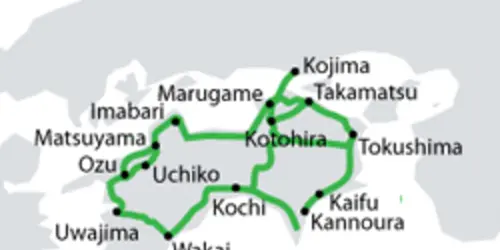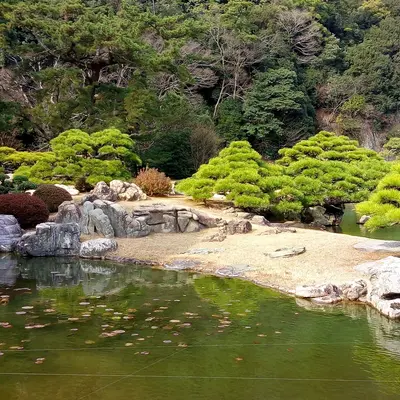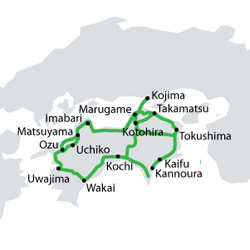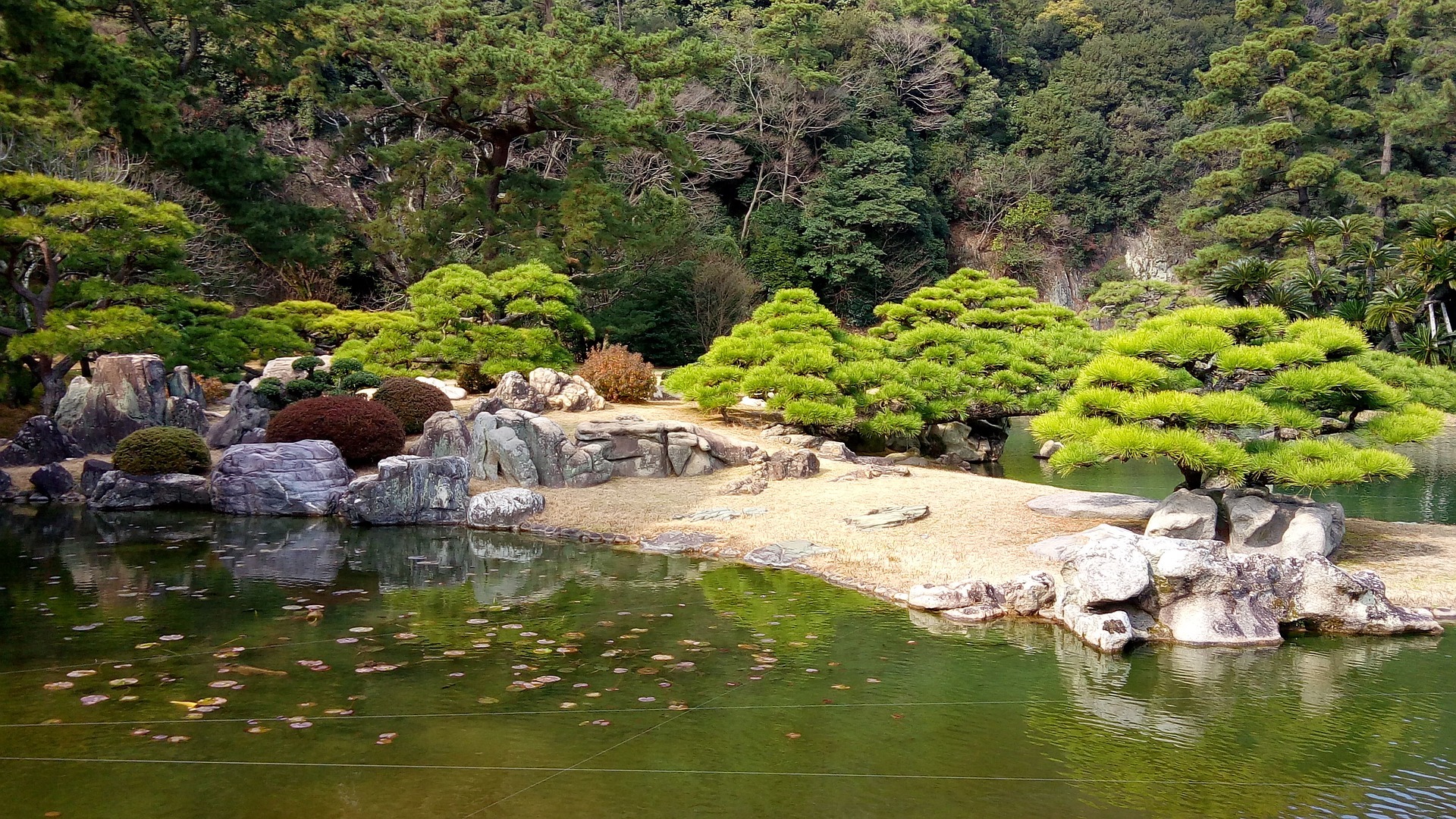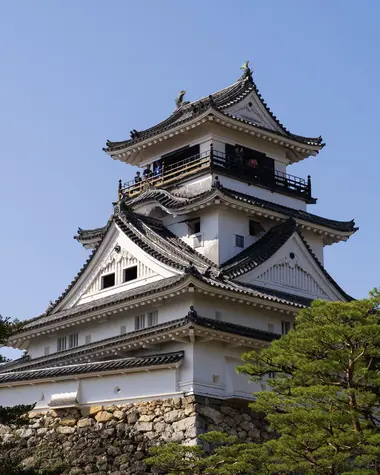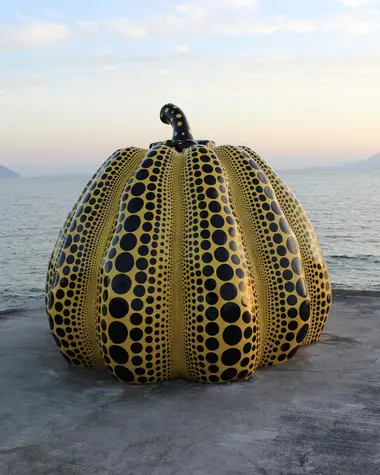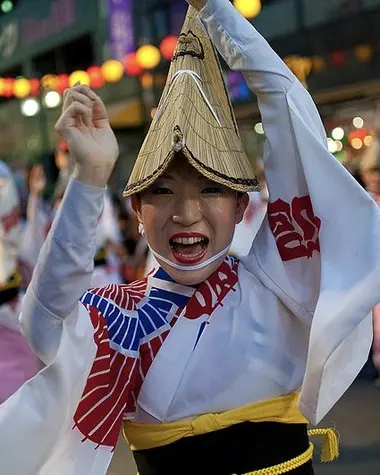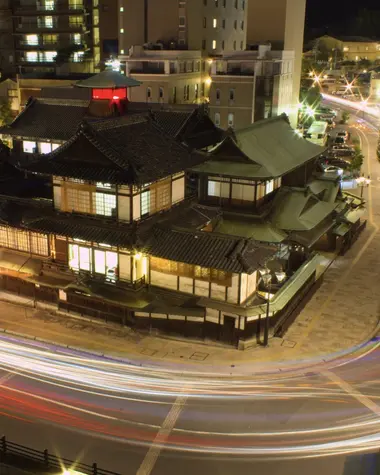All Shikoku Pass
- Viajes ilimitados
- Económico y sencillo
El JR Shikoku Pass, también llamado All Shikoku Pass, es un pase de transporte emitido por la compañía JR Shikoku, que permite el uso libre de los trenes de Japan Railways en la región de la isla de Shikoku, durante 3, 4, 5 o 7 días consecutivos.
Las líneas incluidas en el All Shikoku Pass son:
- JR Shikoku
- Tosa Kuroshio Railway
- Asa Kaigan Railway
- Kotoden
- Iyotetsu
- Tosaden
Los niños de entre 6 y 11 años disfrutan de un pase con descuento, mientras que los menores de 6 años viajan gratis (en compañía de un adulto con un JR Pass válido).
¿Por qué elegir el pase ALL SHIKOKU?
Para cualquier persona interesada en explorar Shikoku, la más pequeña de las cuatro islas principales de Japón y famosa por su belleza natural, su rico legado cultural y su gente amable, el pase All Shikoku es un billete práctico y a un precio razonable. Puede viajar fácilmente entre las bulliciosas ciudades de Shikoku y la serena campiña con este pase, que le da acceso ilimitado a todos los trenes JR y numerosos ferrocarriles privados alrededor de la isla.
Shikoku es conocida por sus características naturales únicas, que incluyen el pintoresco valle de Iya, los remolinos de Naruto, el camino de peregrinación de 88 templos y antiguos castillos como Matsuyama y Kochi. Ya sea que esté descansando en Dogo Onsen, la fuente termal más antigua de Japón, o disfrutando del verde paisaje del río Shimanto, el pase ferroviario All Shikoku le permite ver estos y más lugares fácilmente.
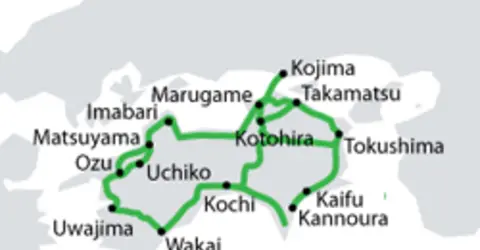
Shikoku area railing network map
Lo más destacado del pase para toda la zona de SHIKOKU
¿Cómo utilizar el ALL SHIKOKU Pass?
Envío
Le enviaremos el cupón electrónico a su dirección de correo electrónico en un plazo de 5 días hábiles a partir de su pedido.
Si necesita su cupón electrónico antes, póngase en contacto con nosotros. (El cupón electrónico no es el billete real, no puede viajar en tren solo con el cupón)
Cambio
Puede imprimir su cupón electrónico en papel tamaño A4 o simplemente mostrarlo en su dispositivo móvil cuando lo cambie.
Puede canjear su cupón por un pase físico en las siguientes ubicaciones:
Validez
El pase es válido durante un periodo de 3, 4, 5 o 7 días consecutivos a partir del día de activación hasta el final del último día de uso.
Con el pase se puede acceder a las siguientes instalaciones:
Cancelación y modificación
Un cupón no utilizado es reembolsable durante un año a partir de la fecha de emisión.
El cupón se puede reembolsar si nunca se ha canjeado en Japón.
Se retendrá una tarifa de cancelación del 15 % del precio del cupón.
No se pueden realizar reembolsos por los cupones que recibimos más de un año después de la fecha de emisión.
No se pueden realizar reembolsos por pases perdidos o robados.
Requisitos
El usuario del pase debe tener un pasaporte emitido por un gobierno extranjero.
El usuario del pase debe ingresar en Japón como "短期滞在 (Visitante Temporal)".
"短期滞在 (Visitante Temporal) " es un estado de residencia definido bajo la ley de inmigración japonesa.
No está permitido comprar o intercambiar más de uno de los mismos pases dentro del mismo período de uso.
Debe presentar su pasaporte para recibir el pase.
Las cuatro prefecturas de la región de Shikoku
Shikoku es una importante región de Japón que podría considerarse el secreto mejor guardado del país. El nombre "shikoku" en sí mismo puede traducirse como "las cuatro naciones", en referencia a las cuatro prefecturas que la conforman: Kochi, Kagawa, Tokushima y Ehime. Entre sus experiencias más populares, la peregrinación a los 88 templos (conocida como Shikoku Henro en japonés) es uno de los viajes más espirituales que puede realizar al visitar Japón. El All Shikoku Pass permite un fácil acceso y navegación en este viaje.
La Prefectura de Kochi
La prefectura de Kochi es una zona mayoritariamente rural, conocida por sus preciosos paisajes naturales de montañas y llanuras, y por su amplía línea de costa de cara al océano Pacífico.
Sin embargo, Kochi es más que una región naturalmente impactante: además, alberga uno de los castillos feudales mejor conservados de Japón, el Castillo de Kochi.
Para disfrutar de una experiencia de compras diferente, visita el famoso mercado dominical de Kochi, que se expande por más de un kilómetro y lleva siglos funcionando, evolucionando con los tiempos.
Además de los mejores puestos de frutas y de comida callejera típica de la región, en este mercado abierto encontrarás todo tipo de productos y artesanías locales, desde árboles bonsái hasta artículos de cocina.
Un lugar como Kochi es una agradable escapada de las grandes ciudades japonesas.
La prefectura de Kochi es especialmente popular entre quienes buscan aventuras en el agua, ya que, además de su dilatada línea de costa, alberga una gran variedad de ríos transitables.
Las actividades acuáticas más populares que hacer en Kochi son:
- Navegación en kayak
- Excursiones de buceo
- Paseos en ferry
- Avistamiento de ballenas y delfines
Los viajes en kayak son una actividad muy popular, tanto en los ríos como en la costa de la prefectura. Las excursiones de buceo y los paseos en ferry son también muy elegidos, tanto por turistas locales como extranjeros.
Por último, para los que buscan una actividad más relajada, un día de avistamiento de ballenas y delfines por las aguas de Kochi es la opción perfecta para disfrutar en familia.
Prefectura de Kagawa
La prefectura de Kagawa, la más pequeña de archipiélago japonés, se encuentra de cara al mar interior de Japón y alberga, entre otras islas, a la de Shodoshima, una isla de ensenada con una serie de características únicas que atraen a viajeros de todas partes del mundo.
Esta fue la primera zona de Japón en cultivar con éxito aceitunas, por lo que ha recibido el sobrenombre de «Isla del Olivo».
De hecho, gran parte de la fama de Shodoshima se debe a sus aportaciones gastronómicas a la cultura culinaria de Japón. Igual de conocidas son sus fábricas de salsa de soja.
Al igual que gran parte de la isla de Shikoku, las atracciones naturales de Shodoshima son un gran atractivo para los viajeros, con la particularidad de que compartirás algunas partes de la isla con unos amigables y divertidos monos salvajes.
Además, la prefectura de Kagawa es considerada una meca para los amantes del arte: la isla de Naoshima, frente a la costa de Takamatsu, cuenta con algunas de las instalaciones artísticas más reconocidas del mundo y atrae la atención de visitantes de todo el planeta, que a menudo viajan a esta zona de Japón específicamente para ver lo que se expone en la isla.
La más emblemática de estas instalaciones es la de la Calabaza Manchada, creada por la igual de emblemática Yayoi Kusama.
Tokushima Prefecture
La prefectura de Tokushima está ubicada en el este de la isla de Shikoku, y está conectada a la isla de Honshu, la isla principal del archipiélago japonés, a través del puente Onaruto.
Es en esta prefectura en donde comienza el tradicional Shikoku Henro, el Camino de Shikoku, con una visita al Templo Ryozenji. De hecho, más de un cuarto de los 88 templos que componen la peregrinación de Shikoku se encuentran en Tokushima.
En otras palabras, recorrer el Shikoku Henro (aunque sea en parte) es una oportunidad perfecta para explorar esta prefectura y, al mismo tiempo, adentrarse en la espiritualidad japonesa.
Además de su rol en el Shikoku Henro, en Tokushima tiene lugar, en agosto, uno de los festivales callejeros más grandes de Japón: el Festival de Baile Awa Odori. Millones de personas, tanto japoneses como extranjeros, participan de este festival cada año.
El área de Naruto, sobre el Estrecho de Naruto, en el extremo de la prefectura de Tokushima, alberga una gran cantidad de remolinos marinos naturales. Un paseo en barco por la zona te llevará a vivir una de las experiencias naturales más interesantes de Japón.
Prefectura de Ehime
Por último, la prefectura de Ehime está situada en el extremo noroeste de la isla Shikoku, justo debajo de la prefectura de Hiroshima.
Esta prefectura es un paraíso para los amantes de las actividades al aire libre.
Una de las razones más populares para viajar a Ehime son sus rutas de ciclismo: hay unas 30 rutas de ciclismo diferentes dentro de la prefectura, accesibles para los viajeros.
Sin dudas, una alternativa sumamente interesante y activa a los viajes en autobús o en tren, accesibles en su totalidad (en caso de ser necesario) con el All Shikoku Pass.
La ciudad de Matsuyama, capital de la prefectura de Ehime, es una hermosa mezcla de modernidad y tradición.
Es allí donde se encuentra el famoso Castillo de Matsuyama, especialmente llamativo durante el día en primavera.
Desde aquí, los que viajan a Matsuyama suelen hacer una parada en el histórico Dogo Onsen, del que se dice que es la fuente termal más antigua de todo Japón. Los visitantes del onsen pueden disfrutar tranquilamente de su tiempo en los baños termales, para recuperarse y relajarse.
